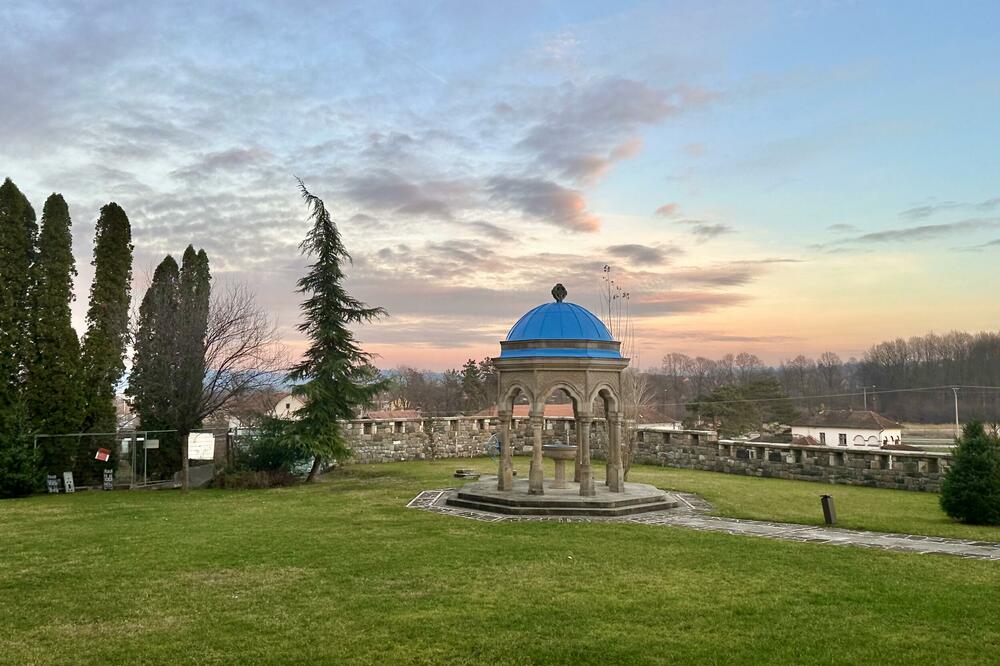In the late afternoon, the sky over the Ibar began to clear. As we cross the bridge, the ruddy trail of the sun on the water can be seen from the car. It won't even take us twenty minutes to drive from Kraljevo. We enter the village of Žiča, turn right, following the sign. There is a place for cars in front of the monastery.
We climb the stairs - the monastery gates are on a hill. I think of all the time that separates this moment from 1219, when the first Serbian king, Stefan Prvojenčani, chose this very place for the coronation of his Nemanjić descendants. "Stairway to heaven", I thought, and it was as if I heard Plant's painful voice encouraging me to climb.
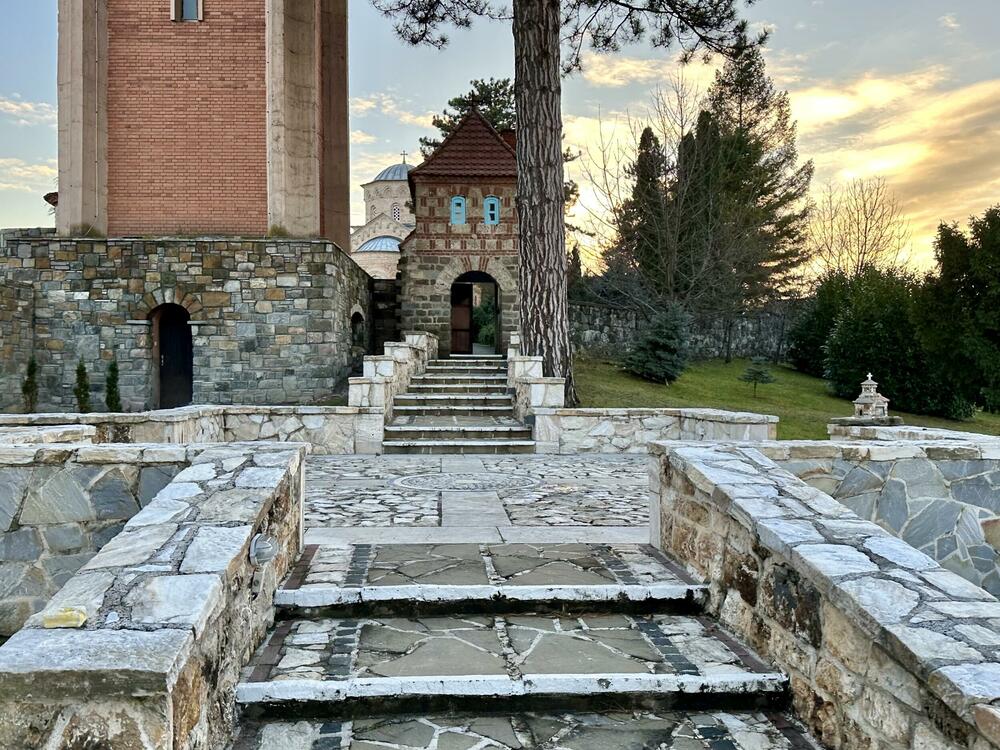
We enter through the first gate and I can't shake the feeling that I'm there for the first time - although I know I'm not. It could have been 2008 when I was here for the first time. I'm not sure about that anymore either. But I remember the juicy red plastered church walls. Now everything is made of stone, the monastery is being renovated. But that brought this building closer to many other sacred buildings from the Mediterranean region that don't even need mortar and lime - hewn stone is the most beautiful building material. The Raški style was also born here.
I am talking to Vlatko Martinovski, a friend and writer from Skopje, about a certain similarity between Ohrid's church and monastery buildings and this beauty. Since shedding her blood red robes she has shown that her essence comes from the south.
Beauty has no earthly purpose
I stop at the candle shop and observe this church for a longer time. At times like these, I think that places of worship are similar to songs. They are not built to achieve something in this world. Temples do not make financial sense, it is difficult to bring them under the culture of consumption and endless kitsch. And that is why they are more precious now than at the time of their creation. Especially if there are no priests around, so it's just you and the temple. In such moments, I admire human sacral buildings because they were made - precisely for such moments, meaningless from a material point of view.
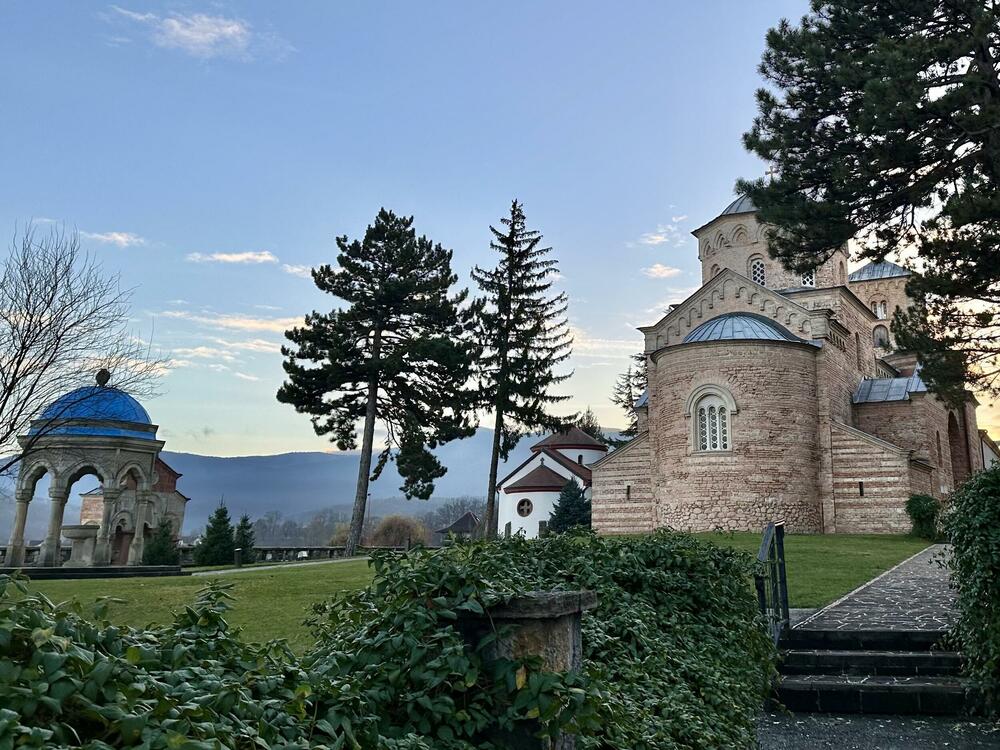
There are few people. Few people visit monasteries for a few days before the end of the year. I welcome this break to remember where I have been all these years. I was standing above Kuršumlija in front of the church of the monastery of Saint Nicholas. This is where the father of the first Serbian king, Stefan Nemanja, began his rise to the first capital and built himself in stone. South Bogdanova's little church above Prokuplje. Stone manuscript again. The chapel at the Serbian military cemetery in Thessaloniki, on a bright March day. In front of the sumptuous headquarters of the Eparchy of Timisoara Serbian Orthodox Church, I felt that buildings remember even when people leave. The seat of the Banat bishop in Vršac seemed equally beautiful to me. But the north gives a baroque, ornate version of the sacred. I was convinced of this when I stood again in front of St. Stephen's Cathedral in Vienna, the Cologne Cathedral, visiting churches on a walk through Regensburg, Passau, Prague. In Chios, Greece, I saw a mosque that became a museum, a little further, on the Greek coast, this happened to churches. In Izmir, I was charmed by the Konak Mosque, which the powerful Pasha's wife had wished for, and he fulfilled her wish in 1755. It seems that this year I have entered sacred buildings more times than some believers. I also took a look at the church of St. Michael the Archangel in Andrijevica. And now I'm here - in Žiča, to crown the year with a visit to the monastery where seven Serbian kings were crowned.
Church of the Holy Savior
In fact, Ascension of Christ is the official name of the main church. Here was the first seat of the autocephalous Serbian archbishopric, but the end of the 13th century brought a Tatar invasion, the monastery was burned down, so when the danger passed, the decision was made to move the seat to Peć. But the Nemanjićs were still crowned in Žiča and enthroned as bishops - King Milutin had already rebuilt the monastery.
I enter an almost empty church. Where does our need to whisper in ringing chambers come from? Two layers of paintings, the older one, created around 1220 and the younger one a century later, time is a good principle. But it is precisely the handwriting of time on the characters who watch us from the walls that gives a special dimension to meeting them.
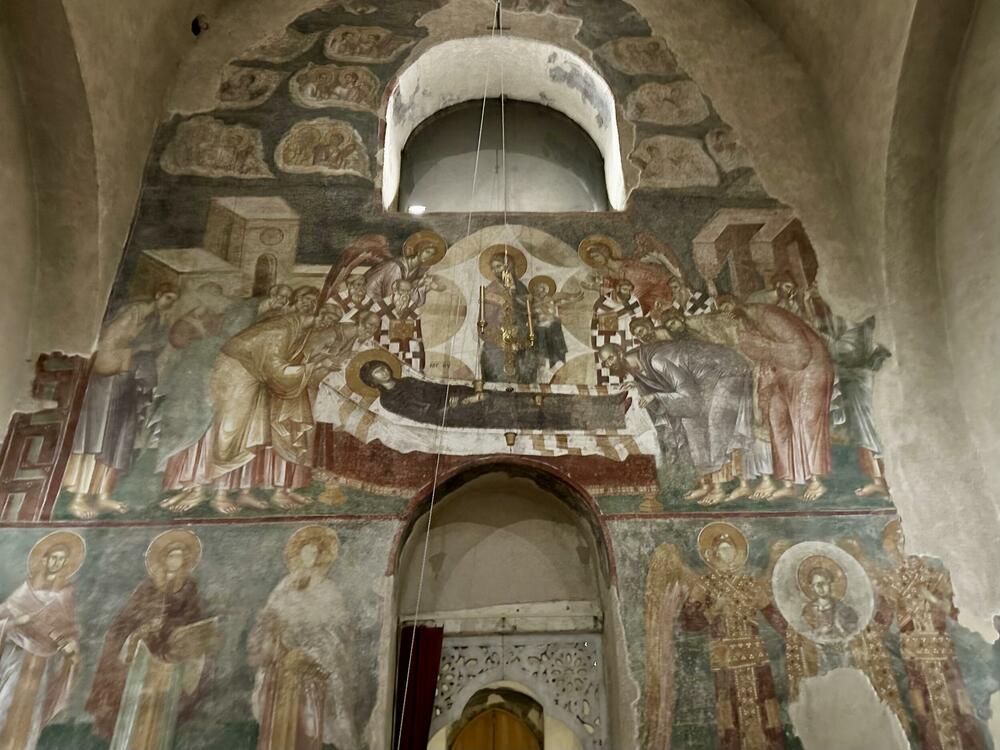
This church is actually - a book. And I begin to spell in it the ancient ruler's charters. Experts in language development say that the word "charter" comes from the verb "povelevati" - to command. It would therefore be a kind of medieval edict. There is a more solemn type of charter - chrisovulja, which in the West was called "gold bull". In two Žižka charters, Stefan Prvovjenčani announced to the world his obedience to God and his will to rule. Papyrus and paper are fragile, walls are better. In Žiča, on the North Wall, parts of the Charter were written: "To this most holy temple of our Savior Jesus Christ, by his unspeakable mercy, which he created with us, I, Stefan, by God's grace, married the first king of all the Serbian land, Dioclitije and Travunia and Dalmatia and Zahumlje …”
Meeting with your own name
Studying the content of this precious document, which is also displayed to visitors on a board covered with glass in the church itself, I was not so much occupied by the ruler's formulas of address, the ceremonial tone or the emphasized godliness of the ruler.
My attention was drawn to the names of "Vlachs" that the ruler gives to the monastery. Then the Vlachs - it is written with a lowercase letter when it refers to a social class, not an ethnic group - were also ethnic Vlachs, descendants of the Romanized population that retreated to the mountains before the Slavs, and Serbs and Greeks and Albanians who lived a nomadic-pastoral life .
I read that the Serbian king was generous: "And these are the heads we gave to this church - these are the names: Grd knez with children, Radota, Vlkoslav, Tihomir, Stanimir, Vojihna, Dragšan, Njegoslav, Zlina, Miroš, Brajen, Njeguš, Njegota, Sina, Radomir, Dragan, Bratin, Vojilo, Držihna, Pačemil, Batina, Bratmir, Draguš, Tihomir, Brateš, Grdoš, Gostilo, Pop, Pačen, Bun, Stan, Dragoman..." And so about 200 names. Living people of whom only a record remains.
I say those names to myself if I don't want to bring them back to life. Names that I have never heard, but that sound familiar: Desislav, Mužilo, Predilo, Bunilo, Božaja, Crnomuž, Bežan, Skoromir, Tihoslav... Then I stop at the names that the centuries have made strange, even bizarre: Poligrad, Brapa, Čuč, Buta, Njeg , Mrgela, Bukor, Čvrnjega, Kupljen, Hodiša, Nerad...
And then I meet - myself from more than eight centuries ago: Dragoslav. If it wasn't for this record, I wouldn't have known that the name was very old. What was that Dragoslav doing? How did he live?
In another source, I read that Stefan Nemanjić also donated 200 Vlach families from Prokletije to this monastery. Anyway, my father is from the core of the Nemanjic lands that stretched along the Ibar and Lim. I am from here by name and surname.
The dining room
A nun walks around the church and hits a wooden bowl with something. Dinner sign? Or rather for prayer? We exit the church, to the only entrance I could see. The church is called the seven doors. According to tradition, each king would enter the coronation through a door specially made for him. When the crowned head came out, that door would be bricked up. We approach a covered place where candles are lit for the living and the dead. As I light one of them I wonder if that makes sense. Then I remember the anecdote when Austrian physicist and Nobel laureate Wolfgang Pauli visited Danish physicist and Nobel laureate Nils Bohr at his holiday home. Above the door was a horseshoe, which is believed to bring good luck. Pauli asked Bora in amazement: "Professor? Horseshoe? Do you really believe that?”. Bor answered: “Of course I don't believe it, Mr. Pauli. But they told me that it brings happiness to those who don't believe in it." It's the same with my candles. Even though I don't believe they can help my living and dead, I still set them on fire. Maybe it works even when someone doesn't believe.
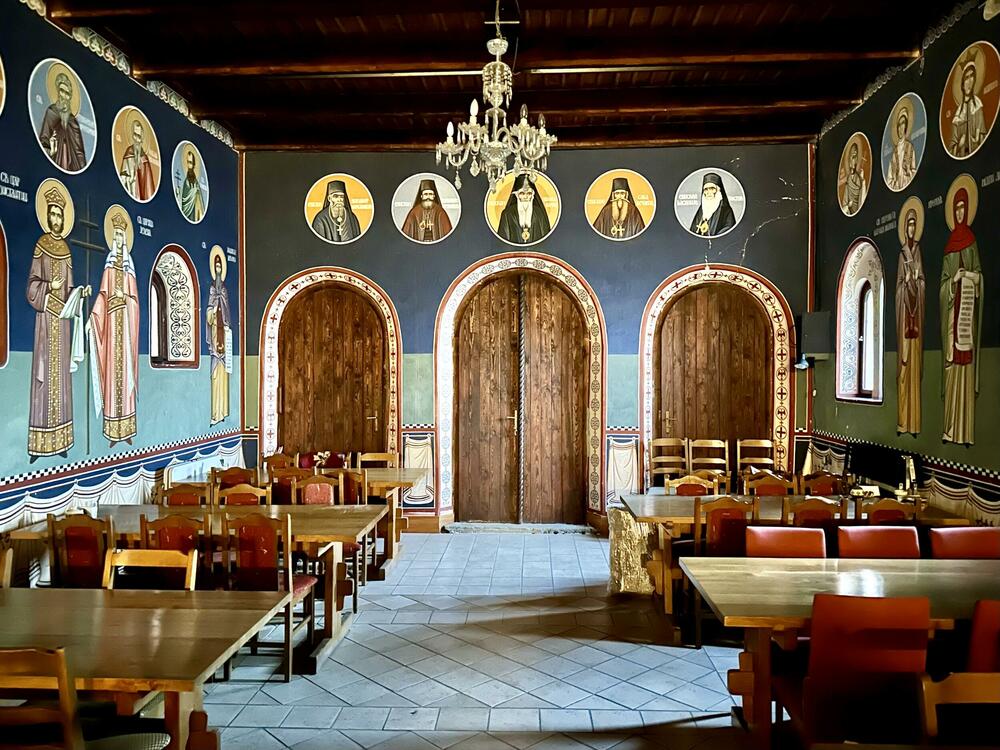
A tour of the dining room follows. The large, painted room is empty. I imagine nuns, the sound of prayer, the sound of spoons. And the sound of laughter, why not? Over the centuries, the monastery was demolished, burned, abandoned, and people would be found who would incorporate themselves into the reconstruction. Even earthquakes did not spare this place. That doesn't surprise me. It is a strange human will to constantly rebuild abandoned and destroyed temples.
Epiphany water
When I was coming here, I thought it was a baptistery. But it didn't. This agiasma - a container for keeping holy water on Epiphany - has been there since August 1938, when it was erected as a memorial to Patriarch Barnabas. Epiphany is widely known for swimming for the holy cross and for the belief that at midnight the heavens open and every wish is fulfilled.
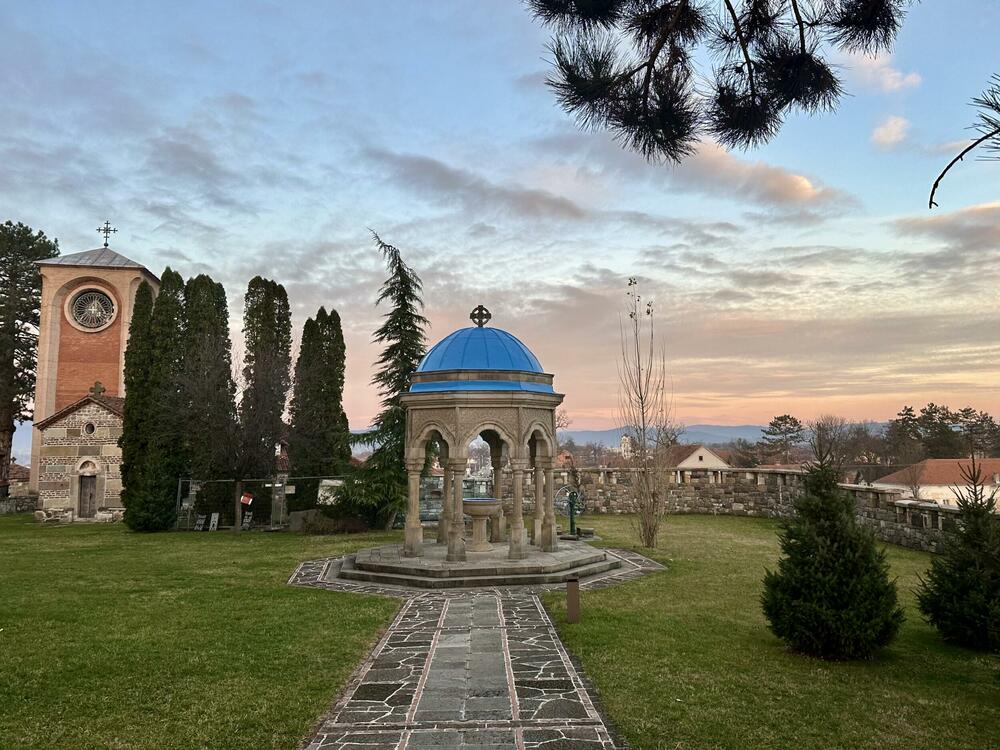
For me, this is a fountain with a canopy, which does not hide its eastern origin. Blue roof in the middle of dusk. This place has such an aesthetic and mystical vibrancy that I would prefer to spend time there until the night casts its veil over it.
But it's time to go. We didn't go around everything. Neither the church of St. Sava, which was designed by Aleksandar de Rocco between the two world wars, nor the hundred šajkačs carved into the wall, in memory of the Serbian soldiers who fell in the wars for freedom. I'll see you again.
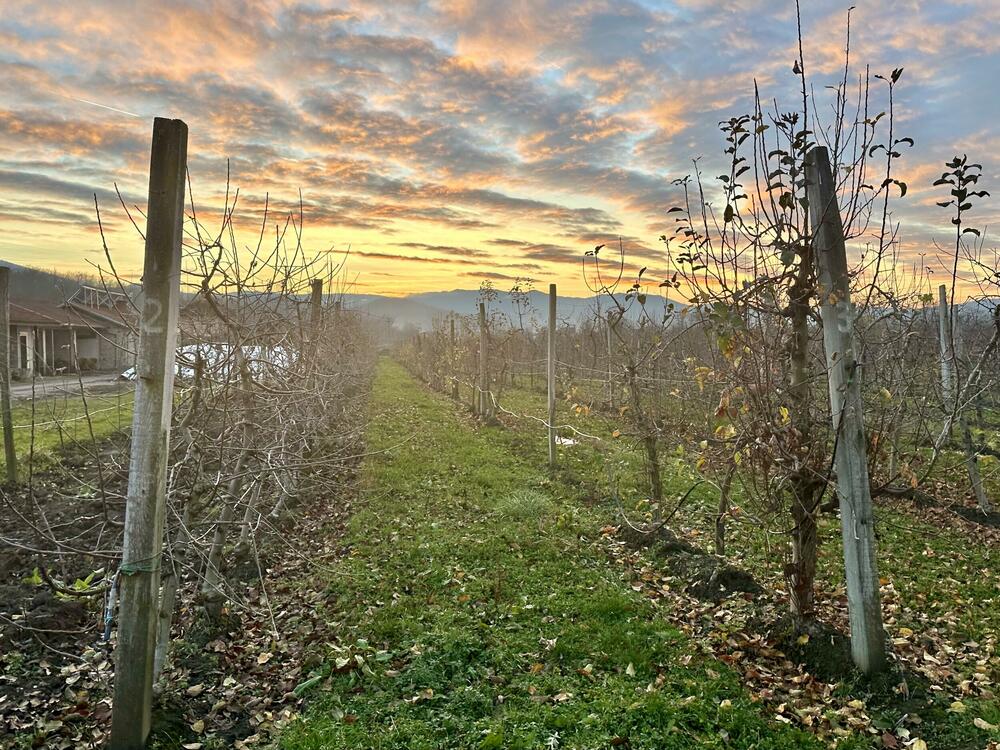
We descend towards the car parked on the edge of the monastery property. The December day said goodbye to our eyes with the last ruddy traces. What was Žiča in December? The place where I found the namesake in a record over eight hundred years old. A place where I felt that agiasm can be equal to a psalm that celebrates life.
Bonus video:



